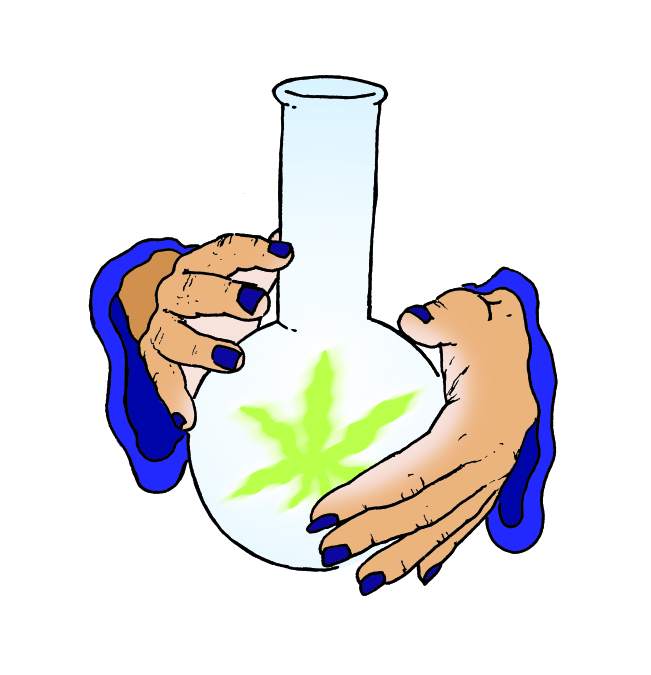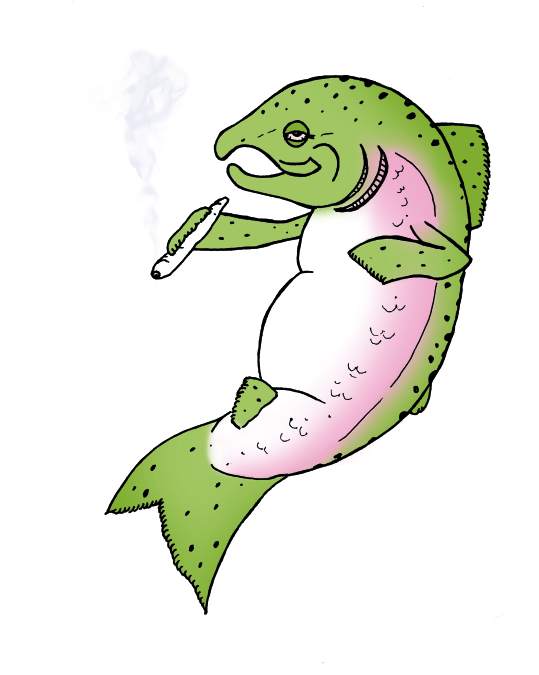I have a few concerns.
I’m concerned that I may be fronting the largest drug operation since Scarface and meth labs ruled the night.
I’m concerned about kids and marijuana and making more of it available to their developing young flea-brains (which, if they’re like mine, will remain half-baked until their late 20s).
I’m concerned about involving the government in oversight and taxation, as we know full well they fuck up everything they get their grubby hands on (and are already squabbling over and redirecting the massive tax revenue being collected).
I’m concerned about the “dabbing” culture that takes highly concentrated cannabis and fires it up with a blowtorch, making users look like crack addicts and putting a frightful face on the future of legalization.
I’m concerned Maureen Dowd will try to get stoned again.
I’m concerned about people who are getting too high too often—“All Day, Everyday”—and are no better than the drunks, tobacco smokers, and opiate addicts we say we’re “safer than.”
I’m concerned that, despite childproof packaging and clear “Adults Only” warning labels, cannabis products that look like gummy bears, chocolate bars, lollipops, and peanut-butter cups may fall into the hands of youngsters.
I’m concerned that corporate fat cats will see the billions being made in legal states, then craft and finance self-serving initiatives that make them rich while cutting out the original growers who for decades fought prohibition from their black-market basements.
I’m concerned that marijuana’s dirty secret will get out—that growing weed indoors sucks up water and power like golf courses on steroids—and make progressive voters wary of voting for legalization. I’m also concerned that, without the proper regulation, even legal cannabis will be laden with pesticides, mold, and other untested and unlisted chemicals.
I’m concerned that, until we rename cannabis strains such as AlienKush OG, Girl Scout Cookies, GreenCrack, and BubbleBerry, we won’t be taken seriously.
I’m concerned that the stoner clichés of the past are being used against individuals who are fabulous souls, but do not wish to be involved in capitalistic and ganjapreneurial efforts.
I’m concerned that current growers in California’s Emerald Triangle have it so good they won’t support the legalization efforts in their state, and may even actively oppose initiatives with their own money. (It’s estimated that more than 80 percent of California’s marijuana is exported—providing little incentive for farmers there to follow a seed-to-sale tracking system.)
I’m concerned that a profit-driven Big Pot industry will increase potency, decrease regulation, encourage overuse, and abandon limits on age and availability of what surely is a mind-bending drug meant for fully functioning adults.
I’m concerned that those now organizing “Boycott 502 Store” campaigns are missing an important point: that legalization, taxation, and regulation are moving the movement forward, and don’t (necessarily) need to jeopardize the rights of and safe access for patients.
I’m concerned that we’re moving more toward Walter White’s vision than Bob Marley’s.
I’m concerned that marijuana will not only be federally legalized, but controlled and dominated by mega-corporations who begin to squeeze out indie farmers, add pesticides and food coloring, and eventually decide that GMO cloning is the easiest option—and we’ll wind up right back where we started: with “prescription” drugs so far from the plant you need a lawyer to read the label.
I’m concerned that with so much emphasis on the amazing medicinal attributes of cannabis, the population without ailments will shy away from the very real benefits of simply getting high.
I’m concerned that the marijuana movement and cannabis culture may not stay true to the ideals that launched the journey, including civil rights and personal liberties. It was never about a Green Rush. It wasn’t about “waking and baking” or dabbing till we got couchlocked. It was about allowing people to farm. It was about being able to use a natural herb to mellow out, and, as it turns out, for medicinal purposes. Ultimately, it’s about making sure no one goes to prison for possessing a plant that grows out of God’s green Earth. That vision of personal freedom—that movement—I can get behind. Those ideals don’t concern me at all.





